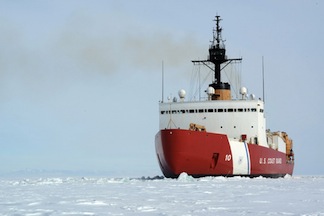The following is the text of a news release from the U.S. Coast Guard:
(HONOLULU) — The United States’ only heavy icebreaker departed Honolulu on Friday bound for Antarctica as part of the U.S. military operation to resupply the U.S. Antarctic Program.
The crew of the Coast Guard cutter Polar Star will establish a channel through 15 miles of ice in McMurdo Sound, Antarctica, sometimes up to 10 feet in thickness, to resupply the National Science Foundation’s McMurdo and Amundsen-Scott South Pole stations.
“Operation Deep Freeze, the U.S. military’s contribution to the National Science Foundation-managed, civilian USAP, is unlike any other U.S. military operation,” said Capt. Michael Davanzo, commanding officer of Polar Star. “It's one of the most difficult U.S. military peacetime missions due to the harsh environment and extreme remoteness in which it is conducted.”
Coast Guard men and women aboard Polar Star spent several days in Honolulu provisioning and conducting critical maintenance prior to departing the U.S. The crew will make one more provisioning stop in the South Pacific in late December before crossing the Southern Ocean for Antarctica.
“The Polar Star is one of the most powerful icebreakers in the world and is critical to our nation’s continued national security and access to Antarctic and Arctic regions,” said Davanzo. “Operation Deep Freeze is one of many operations in the Pacific in which the U.S. Coast Guard promotes security and stability across the region.”
Polar Star is home-ported in Seattle and carries approximately 150 crewmembers, 1.5 million gallons of fuel, and enough food stores to last one year in the ice should it be necessary. Polar Star is 399 feet long, 13,500 tons, 84 feet wide, has a 34-foot draft (same as an aircraft carrier), 75,000 horsepower and nine engines (six diesels, three jet-turbines). The ship can break continuously through 6 feet of ice and can break through up to 21 feet of ice by backing and ramming. The 41-year-old cutter is expected to reach the end of its extended service life by 2023.
The USAP is managed by the NSF on behalf of the U.S. government to support the conduct of world-leading scientific research in and about Antarctica.

